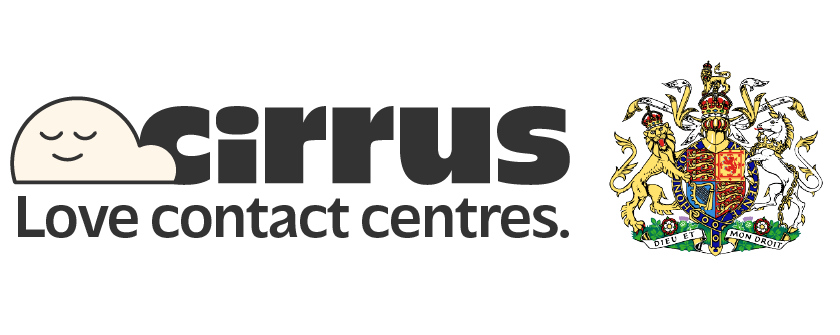This article is featured on CX Today.
Intuitive contact centre strategies influence business revenue in a multitude of ways, delivering both long-term and short-term benefits.
In the short-term, enhancements to a business’s CX strategy improve employee productivity, streamline workflows, and reduce operational costs.
In the long term, an effective approach to CX increases brand loyalty and customer lifetime value, and reduces the costs associated with customer acquisition.
Unfortunately, many companies still struggle to understand the impact of their CX investments in financial terms. Here’s how businesses can effectively start calculating the ROI of CX.
The Complexity in Calculating the ROI of CX
Business leaders and stakeholders are rarely satisfied with vague statements referring to how CX can improve loyalty and increase retention.
They need tangible figures they can use to justify their investments, whether they’re adding new channels to an omnichannel contact centre or investing in innovative tools like conversational AI and intelligent analytics.
Unfortunately, in the past the ROI of CX has been difficult to quantify because there are so many different outcomes to consider. Studies consistently show that CX leaders generate revenue benefits.
For instance, one report found superior CX can increase profits by 7%, and another revealed that customers who have great experiences spend far more with brands than their peers.
84% of companies that work on actively improving CX also report consistent increases in revenue. The question is, where should business leaders be looking to see the roots of this impact?
The reality is CX can influence business ROI in a variety of different ways. Some benefits, while they may seem intangible, do have an impact on various core business metrics, from CAC (customer acquisition cost) to AOV (Average order value). For instance, CX can:
- Increase Customer Loyalty: Loyal customers spend approximately 67% more on products and services than new customers. They also help to reduce customer acquisition costs. It’s far cheaper to retain existing customers than it is to acquire new ones.
- Boost Average Orders and Revenue: By increasing the chances of a customer sticking around, good CX also improves the average order value, and lifetime value of an average customer, leading to higher profits for a reduced spend.
- Improve Brand Equity: Brand equity, or the value a company gives to a brand, increases the amount they’re willing to pay for their goods or services. 86% of customers saying they’re willing to pay more for a better experience. This means investing in CX can give companies an opportunity to charge higher prices for their products, without any extra investment in creating new products or services.
However, it can be difficult to determine exactly which CX strategies drive results when looking at these metrics. To create a more immediate insight into the ROI of CX investments, business buyers and technology leaders may need to take a different approach.
Calculating the ROI of CX Investments: The Easy Way
Perhaps the simplest way to calculate the ROI of CX strategies, like creating a true omnichannel experience for customers, or building conversational analytics and AI tools into your ecosystem, is to determine the monetary value of the time savings produced by efficiency and productivity gains.
For example, a contact centre handles 1000 conversations with customers per day, and the team consists of 10 agents, all working 8 hours per day, to handle around 100 conversations each.
Each team member may be paid $10 per hour for their work, this means the formula for calculating the cost of running the contact centre would be: Agents (10) x Hours (8) x Salary ($10 per hour) = $800 per day. If each conversation correlates with a single customer worth $10 per day, this would mean the contact centre spent $800 per day to earn $10,000.
However, if implementing CX technologies could reduce the average handling time of each agent, reduce the amount of money lost by missed calls, and increase the number of customers the contact centre would serve, the ROI would change.
For instance, if a company implemented an omnichannel contact center solution capable of reducing the time agents spend jumping between apps to handle calls, and access information from a CRM, this could reduce handling times by 30%. If an agent spends 5 minutes a day handling each contact, the time saved for 1000 contacts per day would be around 1500 minutes (25 hours).
Correlated to hourly wages, this could lead to a saving of $250 per day. Using the same calculations, if agents would save approximately 25 hours a day with an omnichannel solution, this would save teams the equivalent of 2.5 full-time agent man hours per day. This means the contact centre could instantly reduce costs by hiring fewer team members, or potentially increase income, by dedicating those extra agents to handling additional calls.
If, as in this example, 2.5 agents could handle another 250 contacts worth $10 each, that’s $2,500 in potential earnings each day. The same idea can be applied to a variety of CX initiatives:
- Implementing an Omnichannel Contact Center: Could reduce agent handling times, improve efficiency, and increase the number of contacts agents can interact with each day, leading to both cost savings, and increased opportunities for revenue.
- Introducing Conversational AI Tools: Such as smart bots and assistants could reduce the number of contacts agents need to handle each day, leading to reduced human resources costs, while increasing the number of interactions managed on a daily basis. “Investing in self-service solutions is a strategic move for businesses in 2023. Not only do these solutions enhance customer experiences, but they also align with evolving customer expectations. As 88% of customers now expect companies to have a self-service strategy, businesses that invest in self-service technology are poised to meet customer demands and gain a competitive edge.” – Jon Dawson, CRO Cirrus
- Using Conversational Analytics Tools: to provide insights, sentiment, and direction to agents in the moment, could speed up average handling times, increase first contact resolution rates, and improve agent efficiency.“
Building on this final bullet point, Jason Roos, CEO of Cirrus, stated:
“You simply cannot ignore the growing demands around data and analytics. Where previously supervisors would analyze five interactions per agent, per month, AI-powered analytics monitors every single one.”
“In turn, this is driving a huge boost in quality across the contact centre industry.”
“After all, as the operating model for contact centres is now dispersed, businesses need the ability to manage data security risk, agent vulnerability, and agent emotional workload, which is all driven by analytics platforms.”
Bringing it All Together: The ROI of CX
Calculating the ROI of CX can seem complex, but there are various areas where companies can look to find potential cost savings, and revenue improvements.
Combining the immediate benefits of CX technologies, seen in things like improved agent efficiency and reduced handling times, with the long-term benefits of customer loyalty, retention, and average order values, provides a clearer picture of the value that CX solutions can deliver.
The reality is that a good CX strategy isn’t just expected in today’s business world, it’s something that has a direct impact on revenue, expenses, and ROI.






